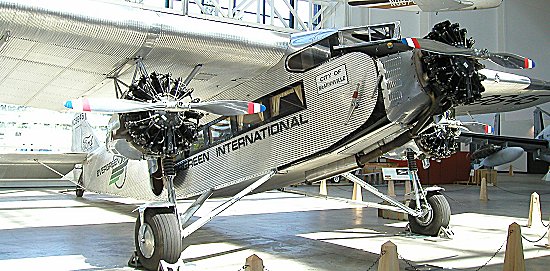Flying Down to Rio
Today, we fly down to Rio. The University of Houston's College of Engineering presents this series about the machines that make our civilization run, and the people whose ingenuity created them.
The movie Flying Down to Rio came out in 1933. In it, we first saw Fred Astaire and Ginger Rogers together. They were still secondary characters, but after they did their exciting Carioca, we knew we'd see them again. The movie not only launched Astaire and Rogers; it also honed the surrealistic song-and-dance pieces that would become a movie staple for the next two decades.
Carioca may've been the best number in the movie, but the most startling one was the title song, Flying Down to Rio. The characters weren't allowed to do a hotel floorshow, so they decided to take their show into the sky. In a wildly impossible scene, scantily-clad dancers performed on the wings of airplanes in flight.
Flight is everywhere in the picture: dancers in the sky; a balloon landing in an outdoor nightclub; a marriage on a seaplane; a rejected lover exiting by parachute; and so on.
Two years later, Douglas Aircraft would finally produce its DC-3, and safe, reliable commercial flight would become the norm. But, for the moment, those dancers linked air travel to county-fair wing-walking -- a hair-raising stunt we'd all seen.
It was a gloriously confused message. Airplanes were dangerous. They were safe. They were adventure. To understand it, we need to go back to the beginning of WW-I. Our military had spent next to nothing on aircraft compared with England, France, Germany, and Russia. Yet our Wright brothers and Glenn Curtiss had been primary creators of the airplane. Something seems askew here.
Look more closely: America's aerial visionaries had all been cut from the fabric of the daredevil entrepreneur. Even the staid Wilbur Wright, when asked what his new airplanes would be good for, replied, "Sport, first of all."
When the American government finally did get into the business of mass-producing airplanes, they adapted the British deHavilland-4. Our DH-4 was a big solid airplane with very little daredevil inspiration. It was of little use in combat, and, when the war ended, we were left with thousands of them. It turns out we were able to use them in our new airmail service.
But our first major transport plane was our Ford Trimotor. It was a more substantial version of another European airplane, the Fokker Trimotor. We kept looking over our shoulder at Europe, while we barnstormed.
Flying Down to Rio, with dancing girls on airplane wings, celebrated air travel, but it kept the connection with daredevilry. We badly needed to leave childhood behind and become adults.
Two years later we produced the DC-3, the greatest airliner of any age. And I suspect that that leap occurred just because of our Flying Down to Rio impulses -- our special intimacy with the sky. Our childhood had lasted a long time. But when we finally left childhood, we were ready to bring flight to maturity very rapidly.
I'm John Lienhard, at the University of Houston, where we're interested in the way inventive minds work.
(Theme music)
For more on the movie Flying Down to Rio, Click Here.
For more on the DH-4, see Episode 1309.
For information about the evolution of Civilian aircraft, see: Angelucci, E., World Encyclopedia of Civil Aircraft: from Leonardo da Vinci to the Present. (English language edition supervised by John Stroud) New York: Crown Publishers, Inc. 1982.

A DH-4 functioning as one of the first airmail carriers

A Ford Trimotor
Photos by John Lienhard taken at the Evergreen Flight Museum, McMinnville, Oregon